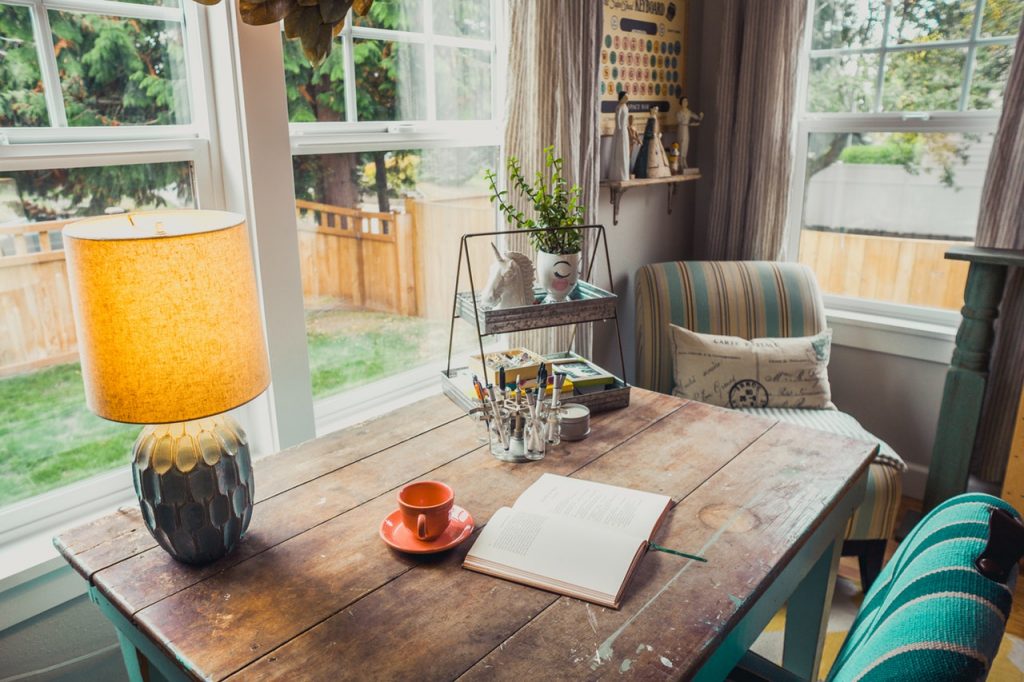Once the excitement of moving into a new house settles, it’s time to take charge as a new homeowner and get familiar with the house. Before unpacking boxes and staging rooms, there are five things a new homeowner should do immediately.
Insulation and Temperatures
Take a look inside an unfinished attic. Make sure there are at least six inches of insulation between the beams. If there is a lack of insulation or insulation that is worse for wear, replace it. Consult with a guide from the Department of Energy about how to insulate an attic, including how much to use depending on the region.
Check the thermostat of the water heater. The hotter the water the more energy the water heater uses. Lower the temperature to an efficient level to save on energy costs. Most modern hot water heaters are insulated, but most older models aren’t. Use a water heater blanket to cover the water heater to retain heat.
Exposed hot water pipes quickly lose heat while transporting hot water. Cover them with pipe insulation to help the pipes retain heat and enjoy warmer water. Install a programmable thermostat that can automatically control the home’s temperature throughout the day.
Check on Air Filters and Vents
Plan on replacing the air filter on the furnace or AC when moving in. Old filters don’t filter air well, which negatively impacts airflow and causes the HVAC system to use more energy. Walk throughout the house and make sure all air vents are clean and unobstructed. Air circulates better through clean vents and reduces the amount of blowing needed to pump.
Airseal the House and Check for Water Leaks
Older homes likely need to be air-sealed. Go around the house and check for places where the air is leaking in or out of the house. Doorways, windows, and electrical outlets are common air-leak spots. Small air leaks add up in energy bills over time. Take a survey of all the home’s plumbing to check for leaks or constant running. Toilets, under-sink pipes, and faucets all have the potential to spring costly leaks.
The exterior of the house can be covered with weatherboard cladding to both increases thermal and sound insulation and protect the house from the elements. Vulcan Cladding Systems offers low maintenance weatherboard systems in composite timber with realistic wood effect stains and aluminum in contemporary solid colors. Add curb appeal and property value while improving energy efficiency with an insulation solution Vulcan Cladding Systems.
Secure the House
One of the first things to do immediately is to secure the house by changing the locks and garage codes. The last thing a homeowner wants is for the previous occupants to have the ability to get into the house. It can never be known how many copies of keys exist, so make the investment and change the locks on all doors. Change garage and home alarm codes to something unique.
Most homeowners focus on keeping uninvited guests from entering the home but don’t think about how to get pests out of the home. Horizon Pest Control is a family-owned residential pest control company with 50 years of experience. Their state-licensed pest control team can eliminate a range of pests like ants, termites, rodents, spiders, and bedbugs.
Create a Maintenance Checklist
If there are issues on the home inspection report that weren’t addressed by the seller, use the report as a guide to creating a maintenance checklist. Note things that need to be repaired, updated, or maintained and rank them in order of importance. Issues that can have a negative impact on bills should be made a priority. Use the prioritized maintenance checklist to budget for routine household tasks and unexpected repairs.





